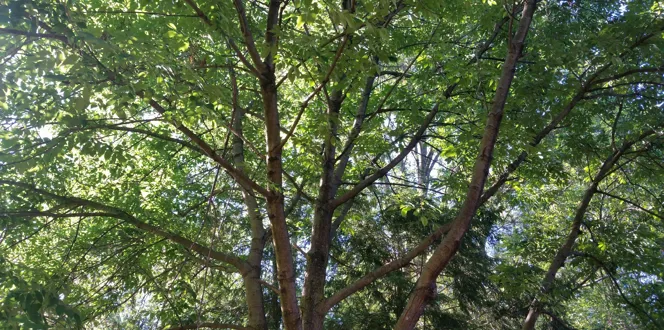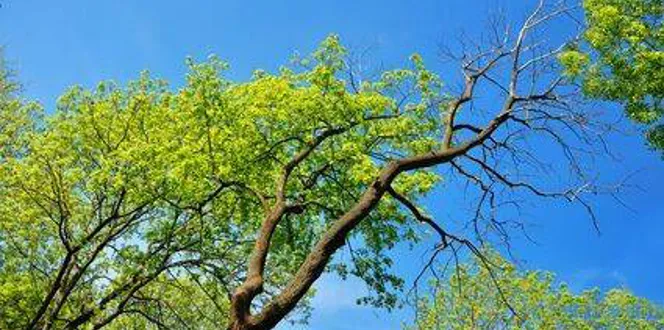The emerald ash borer (EAB) may be tiny, but it wreaks havoc.
This 0.5” beetle has killed millions of ash trees since 2002 when it was first discovered in North America. Back then, if too many EAB larvae burrowed in your ash tree, it was likely a goner.
Luckily, we at The Davey Tree Expert Company have learned a lot since then. If spotted early, you can treat and usually save your ash tree.
Follow Davey Tree’s simple four-step checklist to identify early EAB warning signs.
- Fate of the State. See if EAB is in your state by checking out the Department of Agriculture’s EAB map. Recent maps may even show if EAB has arrived in your county yet. As of January 2021, this destructive bug has made its way to 36 US states and 5 Canadian provinces.
- Identify Your Ash Tree(s). Unsure if you have an ash tree? Ash trees have opposite branches and compound leaves with 7 to 9 eye-shaped leaflets that grow opposite each other. Each compound leaf has a terminal leaflet.
- Know the Signs. The key sign that EAB may have recently infested your tree in thinning of the canopy: fewer leaves and/or fewer live branches. This signals the beginning of decline - after 30% of the original canopy has gone, it becomes nearly impossible to save the tree. Other early signs of an EAB infestation are bark splitting, sucker growth, or overabundance of woodpecker activity often seen as whitish peeled bark.
- Treat. If you spot these early symptoms of emerald ash borer, take action today! Or if EAB is in your area, take advantage of Davey’s complimentary ash tree inspection. The best treatment of EAB is preventative and may save you from having to remove a tree later.
Contact your local arborist for a free consultation if you have questions or concerns about EAB.
Topics:





